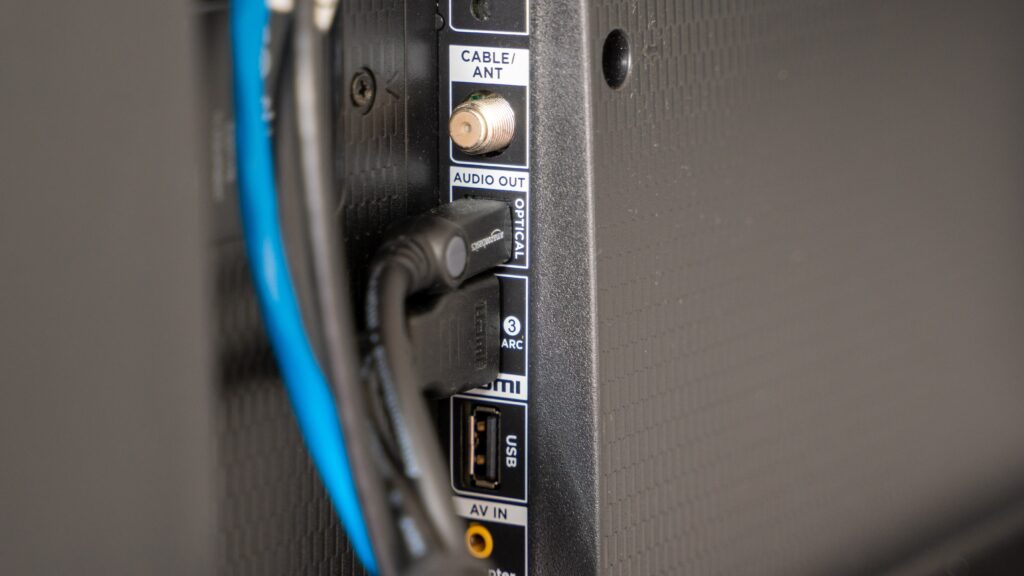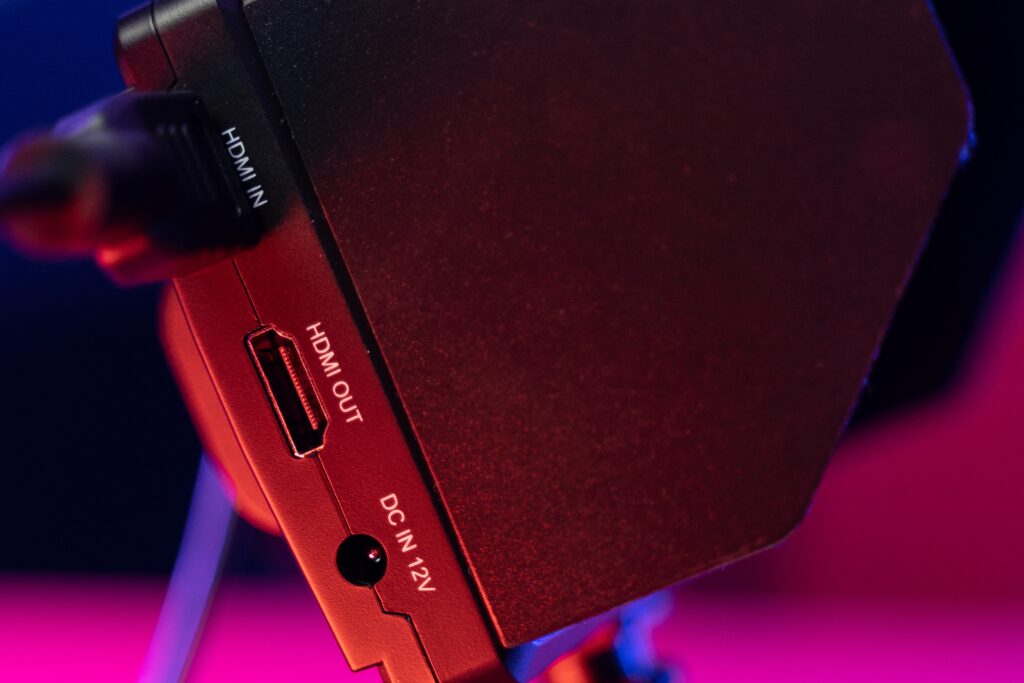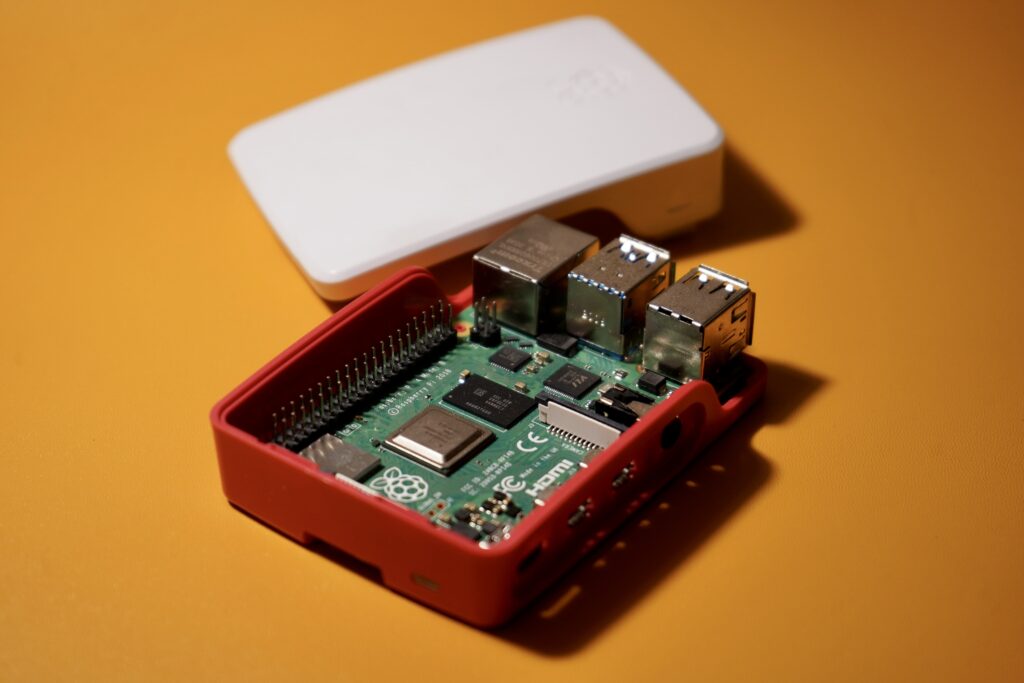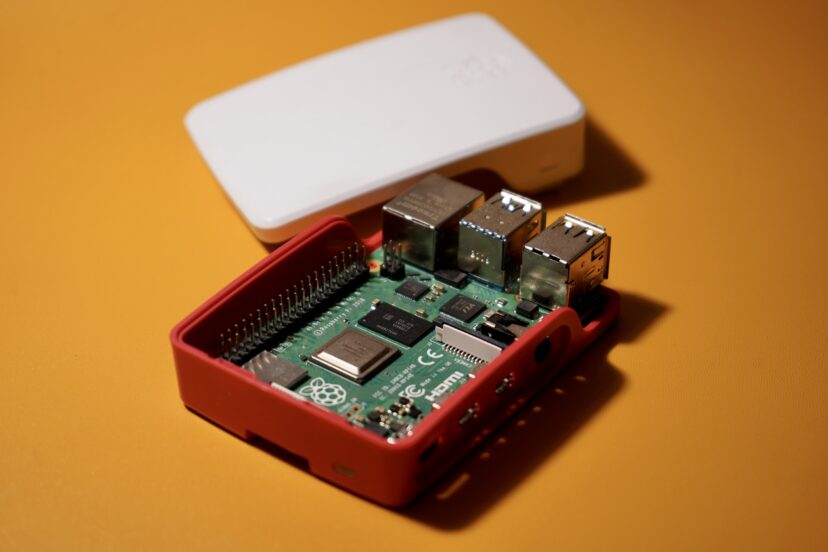What Is HDMI 2.1 And Why Is It Important For Gaming: 10 Key Factors
Imagine this scenario: you’ve just purchased the latest gaming console, eagerly anticipating the immersive and thrilling gaming experience that awaits you. But before you can dive into the action, you hear murmurs of something called HDMI 2.1. So what is HDMI 2.1 and why is it important for gaming? Well, buckle up, because in this article we’re going to unveil the power of HDMI 2.1 and how it can enhance your gaming adventures to a whole new level of excitement.
What is HDMI 2.1?
HDMI 2.1 is the latest version of the High-Definition Multimedia Interface (HDMI) standard, which is used for transmitting audio and video signals between devices such as televisions, gaming consoles, and media players. It was introduced in 2017 and offers a range of new features and improvements over the previous HDMI 2.0 standard. HDMI 2.1 is especially important for gaming as it provides faster and more efficient data transfer, enabling higher resolution, faster refresh rates, and improved audio for an enhanced gaming experience.

What Is HDMI 2.1 And Why Is It Important For Gaming: A Detailed Look
Increased Bandwidth: The Backbone of Enhanced Performance
One of the most noteworthy advancements in HDMI 2.1 is the substantial bump in bandwidth, which now reaches up to 48 gigabits per second (Gbps). To put this into perspective, this is approximately double the 25.6 Gbps offered by its predecessor, HDMI 2.0. The implications of this boost are vast, chiefly in the realm of video and audio fidelity.
By facilitating a higher data transmission rate, HDMI 2.1 paves the way for uncompressed 8K content, which is a visual feast with four times the resolution of 4K. Imagine the level of detail and clarity this can bring to graphically intense games. The platform also ushers in the capability to display 4K content at a jaw-dropping 120Hz. For the uninitiated, this means gameplay will be smooth as silk, bringing a sense of realism and immediacy to every gaming experience.
Higher Resolution Support: The Future of Gaming Visuals
Another perk of HDMI 2.1 is its enhanced support for higher resolutions, including both upscaling and native 4K content. Upscaling allows lower-resolution footage to be magnified to better match the capabilities of higher-resolution screens. The result? Even less-than-perfect source material can appear noticeably more precise and vibrant.
On the flip side, native 4K content—designed specifically to exploit 4K display technology—appears even more lifelike and immaculate. The advantages don’t end here. HDMI 2.1 also brings dynamic metadata into the mix, allowing for enhanced control over color settings from scene to scene. This enables more vivid, nuanced, and accurate color reproduction, pushing gaming visuals to an entirely new stratosphere of excellence.
Refresh Rate and Frame Rate: The Dynamics of Fluid Gaming
One area where HDMI 2.1 flexes its muscles is in the realm of refresh rates and frame rates. The standard offers support for an extensive array of refresh rates, allowing you the luxury of customizing your settings according to your individual gaming preferences. Whether it’s high refresh rates for smooth, fluid action in fast-paced scenarios or lower rates for a more cinematic approach, HDMI 2.1 leaves the choice in your hands.
The story doesn’t end at refresh rates. HDMI 2.1 also pushes the envelope when it comes to frame rates, ensuring that your games look as fluid as they feel. This has a ripple effect on the entire gaming experience, mitigating motion blur and delivering sharper, more responsive action. Coupled with Variable Refresh Rate (VRR), which syncs your display’s refresh rate with the game’s frame rate, you get an environment that’s virtually free of screen tearing, stuttering, and lag.
Enhanced Audio: The Sonic Dimension of Gaming
Audio is an often underappreciated yet vital aspect of immersive gaming. HDMI 2.1 rises to the occasion with support for cutting-edge audio technologies such as Dolby Atmos and DTS:X. These sound formats introduce a level of audio depth and three-dimensionality that is nothing short of revolutionary, enveloping you in a sphere of sound that extends far beyond traditional stereo or surround setups.
Added to this is HDMI 2.1’s incorporation of eARC (enhanced Audio Return Channel). eARC simplifies your life by transmitting high-quality, uncompressed audio through a single HDMI cable, eliminating the need for supplementary audio connections. Imagine connecting your eARC-enabled gaming console directly to your eARC-enabled TV or soundbar and being enveloped by studio-quality sound with just one cable.
Dynamic HDR: A New Benchmark in Image Quality
HDMI 2.1’s introduction of Dynamic HDR is a significant leap over the static HDR offered in previous generations. Unlike its predecessor, Dynamic HDR adjusts picture settings on a scene-by-scene basis, optimizing color, contrast, and brightness for each individual moment. This means that each gaming level or scenario will look its absolute best, enhancing your overall gaming satisfaction.
Game Mode VRR: The End of Tearing and Lag
Any gamer will testify that screen tearing and lag are the bane of a good gaming session. HDMI 2.1 comes to the rescue with its Game Mode Variable Refresh Rate (VRR). This advanced feature fine-tunes the screen’s refresh rate to match the frame rate output of the game. The result is a substantial reduction in screen tearing, stuttering, and input lag, offering a gaming experience that’s as smooth as it is immersive.
Not only does this allow for more responsive gameplay, but it also provides a competitive edge, enabling you to respond more rapidly in action-packed gaming scenarios.
In summary, HDMI 2.1 isn’t just an incremental update; it’s a quantum leap in audiovisual capabilities, particularly for gaming. From its increased bandwidth and resolution support to its improvements in frame rates, audio, and HDR technology, HDMI 2.1 sets a new benchmark for what’s possible in immersive, responsive, and visually spectacular gaming.

What Is HDMI 2.1 And Why Is It Important For Gaming: Benefits
Now that we have explored the key features of HDMI 2.1, let’s discuss the specific benefits it brings to gaming.
Reduced Input Lag
Input lag is the delay between pressing a button on your controller and seeing the corresponding action on the screen. HDMI 2.1, with its faster data transfer and VRR capabilities, helps to reduce input lag significantly. This means that you’ll have a more responsive gaming experience, allowing for quicker reactions and improving your overall gaming performance.
Smooth Gameplay
HDMI 2.1’s support for higher refresh rates and frame rates ensures that your games are displayed with smooth and fluid motion. This not only provides a more visually pleasing experience but also enhances your gameplay. When the visuals are displayed smoothly, you can react faster to in-game actions, leading to improved performance and better immersion in the virtual world.
More Detailed Graphics
With HDMI 2.1’s support for higher resolutions and enhanced color depths, you can expect more detailed and lifelike graphics in your games. Whether you’re exploring vast open-world environments, engaging in intense firefights, or admiring the smallest details of a virtual world, HDMI 2.1 will deliver stunning visuals that truly immerse you in the game.
Improved Audio Experience
As mentioned earlier, HDMI 2.1 supports advanced audio formats like Dolby Atmos and DTS:X. These formats provide a three-dimensional audio experience that enhances gameplay by providing a more immersive and realistic soundstage. Imagine hearing every footstep, gunshot, and explosion with pinpoint precision, adding a whole new layer of depth to your gaming experience.
In addition, HDMI 2.1’s eARC and ARC functionalities simplify audio connections by allowing for high-quality audio transmission through a single HDMI cable. No more messy cables or complicated setups. Just plug in your HDMI 2.1-compatible devices, and enjoy high-quality audio without any hassle.
Backward Compatibility: A Closer Look
HDMI 2.1 is designed to be backward compatible with older HDMI versions. This means you can connect an HDMI 2.1 device to a television or monitor that uses an older HDMI version without any significant issues. However, you may not be able to access some of the advanced features like higher resolutions and refresh rates unless both the device and display support HDMI 2.1. This backward compatibility is especially advantageous for consumers who are gradually upgrading their systems, providing a seamless transition without requiring a complete overhaul of existing equipment.
Installation and Setup Tips
Setting up HDMI 2.1 for optimal gaming performance involves more than just plugging in a cable. While any high-speed HDMI cable should work, using an HDMI 2.1-certified cable can ensure that you are taking full advantage of all the features, such as 8K resolution and 120Hz refresh rates. Make sure to update your device firmware as manufacturers frequently release updates to improve performance and resolve compatibility issues. In the settings menu of your gaming console or PC, look for options to enable higher resolutions and advanced audio formats to fully leverage HDMI 2.1 capabilities.
Comparing HDMI 2.1 with Alternate Technologies
While HDMI 2.1 brings a lot to the table, technologies like DisplayPort and USB-C also offer compelling features. DisplayPort, for instance, provides comparable resolutions and refresh rates but is less common on televisions and more oriented toward computer monitors. USB-C is incredibly versatile and can carry both data and video signals, but it’s still not as ubiquitous for gaming purposes. Wireless technologies offer freedom from cables but often sacrifice some quality and introduce latency. When choosing among these options, consider what best suits your specific gaming setup and requirements.
Gaming Console Compatibility
As of January 2022, both PlayStation 5 and Xbox Series X support HDMI 2.1 features. This includes 4K gaming at 120Hz and Variable Refresh Rate (VRR). For Xbox Series X, there’s even support for 8K resolution, although content at this resolution is limited. These features provide an enhanced gaming experience, taking advantage of HDMI 2.1’s capabilities to deliver smoother, more realistic gameplay.
Popular Games That Benefit from HDMI 2.1
Games like “Call of Duty: Warzone,” “Cyberpunk 2077,” and “Fortnite” can benefit enormously from HDMI 2.1’s higher resolutions and refresh rates. The lifelike visuals, complemented by smoother motion, contribute to a more immersive gaming experience. Dynamic HDR also ensures that each scene is rendered with optimal contrast and color, making these games visually stunning.
HDMI 2.1 and Home Theater Systems
If you have a home theater system, integrating HDMI 2.1 can significantly upgrade your experience. With support for advanced audio formats like Dolby Atmos and DTS:X, HDMI 2.1 can transmit high-quality, immersive audio to your sound system, enhancing both gaming and movie-watching experiences. Additionally, eARC allows for lossless audio transmission between your TV and sound system, simplifying your setup by reducing cable clutter.
Troubleshooting Common Issues
Users might encounter problems like screen tearing, audio lag, or connectivity issues with HDMI 2.1. For screen tearing, enabling VRR can offer a solution. Audio lag could be resolved by updating the device firmware or adjusting audio settings. For connectivity issues, ensuring that all components are HDMI 2.1 compliant and updating to certified cables can frequently resolve problems.
Frequently Asked Questions
Common questions about HDMI 2.1 often involve its compatibility with existing systems, the necessity of new cables, and how to enable its advanced features. Offering clear, concise answers to these questions can alleviate consumer concerns and make the transition to HDMI 2.1 smoother.
User Reviews and Expert Opinions
Many users have touted HDMI 2.1 as a game-changer, citing improved gaming performance, better audio, and stunning visuals. Expert reviews echo these sentiments, often highlighting how HDMI 2.1 offers a comprehensive solution for next-level gaming experiences.
Looking Ahead: Possible Future Advancements in HDMI Technology
As the technological landscape continues to evolve, it’s fascinating to speculate about the future of HDMI standards, particularly concerning gaming. Let’s dive into some of the potential advancements that could further transform the way we engage with digital media and gaming experiences.
Beyond 8K: The Next Frontier of Resolution
HDMI 2.1 has already made 8K resolution mainstream, offering unparalleled visual fidelity. However, the industry is far from stagnant. With display technologies like OLED and MicroLED on the rise, it’s conceivable that future HDMI standards might support even higher resolutions—12K, 16K, or beyond. These future resolutions would not merely offer greater pixel density but could also enhance gaming immersion, making artificial worlds nearly indistinguishable from reality.
Advanced Color Technologies
While HDMI 2.1 already provides a robust platform for dynamic HDR and wide color gamuts, advancements in quantum dot technology and color science may lead to even more accurate, vibrant, and lifelike colors. Future HDMI iterations may include support for adaptive color technologies that change in real-time according to the game environment or even the viewer’s perception.
Interactive Gaming Experiences
As cloud gaming and interactive streaming platforms become more sophisticated, the future of HDMI might include low-latency data transfer modes specifically designed for these applications. This could mean better real-time interaction between the cloud and your local device, allowing for gaming experiences that adapt in real-time based on player behavior and choices.
Haptic Feedback and Sensory Integration
Haptic feedback technology, which simulates tactile sensations, is already making its way into gaming controllers and VR devices. Future HDMI standards could potentially offer data channels dedicated to haptic and other sensory feedback, deepening the level of immersion by synchronizing visuals, audio, and tactile sensations seamlessly.
Audio-Visual AI Integration
Artificial Intelligence (AI) is becoming a cornerstone of modern technology. Its potential incorporation into HDMI standards could be revolutionary. Imagine an AI-powered HDMI interface that can optimize audio and visual settings in real-time based on the content being displayed. For instance, an AI algorithm could analyze a game’s audio and visual elements to adjust settings like brightness, contrast, and volume, dynamically enhancing your immersion and gameplay.
Enhanced Security Measures
As the complexity and capabilities of HDMI technology grow, so too do the risks of data breaches and other cyber threats. Future iterations of HDMI may prioritize enhanced security features to ensure that data transfer between devices is as safe as it is efficient.
Sustainable and Energy-Efficient Designs
As society becomes increasingly conscious of its environmental impact, future HDMI standards might focus on energy efficiency without compromising performance. This could include smart technologies that can dynamically adjust power usage based on the demands of the content being displayed.
In conclusion, the future of HDMI technology holds an array of exciting possibilities that could significantly impact gaming, from resolutions that stretch the limits of the human eye to interactive, AI-integrated experiences that adapt in real-time. As consumer demands and technological capabilities evolve, HDMI standards are likely to continue pushing the boundaries, setting new benchmarks for what is possible in audio-visual experiences. Keep an eye on this space; the next revolution in immersive gaming may be just around the corner.

Conclusion: HDMI 2.1—The Game Changer in Audiovisual Technology for Gaming
HDMI 2.1 isn’t just a minor update; it represents a significant leap forward in audiovisual technology, particularly benefiting those who are passionate about gaming. Let’s delve deeper into why this is such a monumental advancement.
Unprecedented Bandwidth and Higher Resolution Support
One of the major highlights of HDMI 2.1 is its vastly increased bandwidth, which goes up to 48Gbps. This enables support for higher resolutions like 8K at 60Hz and even 4K at 120Hz. What does this mean for gamers? Simply put, it provides a gateway to more detailed and vibrant visuals, allowing for a richer and more immersive gaming experience. The level of detail that can be rendered on-screen with this increased bandwidth is nothing short of spectacular.
A Smoother Gaming Experience with Improved Refresh Rates
Higher refresh rates are another feather in HDMI 2.1’s cap. Gamers know that a higher refresh rate can drastically improve gameplay, making interactions more fluid and lifelike. With support for refresh rates up to 120Hz at 4K resolution, HDMI 2.1 ensures that fast-paced games will appear smoother, lessening motion blur and providing a more enjoyable and competitive gaming experience.
Enhanced Audio Capabilities and Dynamic HDR
When it comes to audio, HDMI 2.1’s eARC (Enhanced Audio Return Channel) feature offers a significant upgrade, providing high-quality, uncompressed audio. This is particularly crucial for those looking to make the most of advanced audio technologies like Dolby Atmos. Dynamic HDR is another exciting feature, as it optimizes the picture quality frame-by-frame, offering more vivid and dynamic visuals that add to the gaming environment’s realism.
Game Mode VRR and Reduced Input Lag
Nobody likes lag, especially during intense gaming sessions where every millisecond counts. HDMI 2.1’s Game Mode Variable Refresh Rate (VRR) technology adapts the screen’s refresh rate to the frame rate of the game, effectively reducing or eliminating lag and screen tearing. This leads to more responsive gameplay, ensuring that your real-time actions are almost instantly reflected on-screen.
Future-Proof Your Gaming Setup
As technology advances, the relevance and utility of older standards diminish. With more and more devices—be it gaming consoles, monitors, or TVs—adopting HDMI 2.1, the standard is becoming increasingly ubiquitous. Therefore, now is the opportune moment to future-proof your gaming setup. Embracing HDMI 2.1 is like investing in a ticket to a future where your audiovisual experience can only get better.
The Ultimate Gaming Adventure Awaits
So, if you’re serious about gaming, HDMI 2.1 is not just an upgrade; it’s a revolutionary change that can transform your entire gaming experience. With its multitude of enhanced features—reduced input lag, smoother gameplay, more detailed graphics, and improved audio—you’re not just playing a game; you’re stepping into a more vivid and responsive world. Gear up, because an unparalleled, immersive, and utterly exhilarating gaming adventure awaits you with HDMI 2.1.




